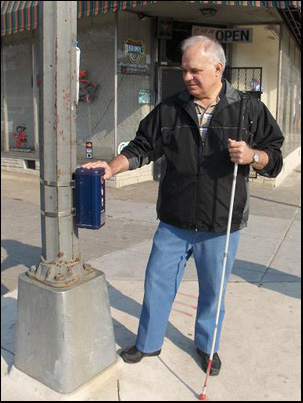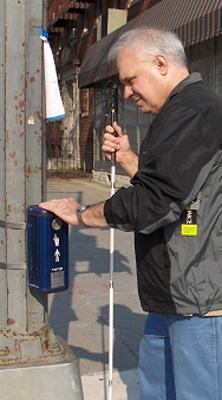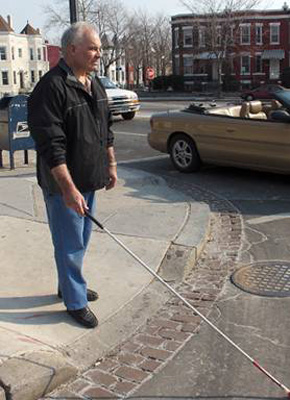APS make traffic signals accessible to deaf-blind people



Accessible pedestrian signals (APS) can enable people who are deaf-blind to recognize when the WALK signal begins. The deaf-blind man here, Arthur Roehrig, demonstrates usage of a Prisma APS, which has a tactile arrow on the top pointing in the direction of the crossing. The arrow vibrates in conjunction with audible ticking, which changes to indicate the onset of the walk signal.
Deaf-blind pedestrians who use APS for crossing must have sufficient street-crossing skills. They also must be aware of the possibility of vehicles crossing and conflicting with their path, and consider whether the risk is acceptable – see Getting Across the Street with Visual and Hearing Impairments, including suggestions for getting assistance to analyze risks.
Grateful appreciation to Arthur Roehrig for being photographed for these illustrations.
Return to Getting Across the Street with Visual and Hearing Impairments
Return to Home page




